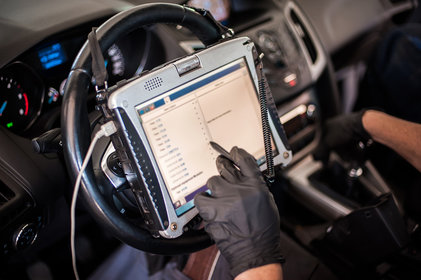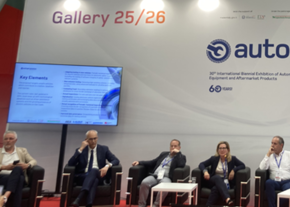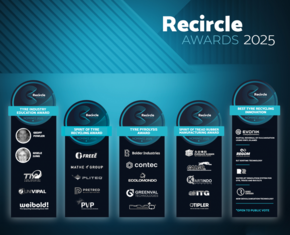
29/10/2020
Euro 7 emission and consumption checks in real driving conditions. The proposal by Egea and Cita
Massimo Brunamonti
The European Commission, after an initial survey, in March, which involved several companies and trade associations, launched a public consultation with a view to introducing the Euro 7/VII emission standard on cars, vans, trucks and buses
The European Commission, after an initial survey, in March, which involved several companies and trade associations, launched a public consultation with a view to introducing the Euro 7/VII emission standard on cars, vans, trucks and buses. This consultation, which will end on 20 November, is open to all stakeholders, including national and local authorities, vehicle manufacturers, consumer associations and private citizens. To date, no deadline has been set for the entry into force of this Euro 7 standards, however, according to the EU Roadmap, the regulation introducing the new standard could be approved by the end of 2021.
According to official documents, through this new Euro 7 standard, the Commission aims, among other things, to "update emission limits and ensure that these limits are respected throughout the life of a vehicle". According to Brussels, Euro 6 regulations are no longer sufficient to achieve the 2050 objectives set by the "Green Deal".
The Commission also notes that, as things stand, monitoring activities are incapable of assessing the real environmental impact of a vehicle throughout its entire life cycle. And this is precisely the sore point: according to Egea (European Garage Equipment Association) and Cita (International Motor Vehicle Inspection Committee) the real fuel consumption of modern vehicles under real driving conditions is still significantly different from the lab values obtained during type-approval tests. This is caused, on the one hand, by driving behaviour and, on the other, by different requirements of the test cycle; these differences may well be the result of vehicle manufacturers using software and hardware at specific points on the engine in order to artificially improve CO2 results: i.e. the Dieselgate! For this reason, Egea and Cita welcome the introduction of an independent and regular monitoring system on the difference of CO2 emission and fuel consumption values between lab data and real driving conditions. This is the only way, according to both associations, to avoid further discrepancies and ensure transparency for the consumers.
EU Regulations 2018/1832 and 2019/1242 already provide the tools to exercise this control through mandatory "on-board fuel consumption monitoring devices" (Obfcm) on passenger cars and light vans from 1 January 2021 and on heavy commercial vehicles from 1 January 2022. These Obfcm (On-Board Fuel Consumption Monitor) will collect energy consumption and mileage data so that the necessary comparison can be processed. But the question is: who and how will this data be collected and passed on to the Commission? This is precisely the subject of the work being carried out by the "Obm Task Force", which the Commission has mandated to develop a technical solution by the end of 2020.
However, according to Cita and Egea, the solution is already available; there is no need to "re-invent the wheel", just use the technologies and structures already available. Assuming that the solution must in any case meet all the necessary criteria of digital security and privacy protection, there are additional aspects that must not be overlooked for an effective, transparent, capillary and secure data collection: uniform data reading standards and independent data collection from the digital equipment as well as the platforms used.
Let us see how all of this is already possible. Regulation (EU) 2018/1832 annex XXII, prescribes that the Obfcm device should guarantee a standardised and unlimited access to data; well, Unece regulation n. 83 already identifies the Iso 15031-5 standard as adequate to satisfy this request and therefore ready to be used as a standard data format. As far as transmission is concerned, every vehicle must already be equipped with an Obd interface; it is therefore sufficient to read the Obfcm device through this interface to obtain both consumption and emission data; the Obd interface, among other things, is a widely consolidated technology and used throughout the vehicle's life cycle, from type-approval to inspection tests and maintenance, and uses economical though decidedly advanced equipment. As for the last step, data interpretation, the solution lies in the Sae J1979 industrial standard, also widely accepted by the industry as a whole. In conclusion, the required information on emissions and fuel consumption could already be collected using modern technology and well-tested equipment, designed to guarantee data protection and security. Finally, talking about premises and business structures, it is obviously a question of identifying qualified structures and personnel involved, precisely what has already been done with roadworthiness inspection centres, which could already constitute a suitable data collection network by virtue of their qualification and capillarity. The suggestion by Cita and Egea to use the standard Obd interface, along with other technologies, may well prove the fastest and cheapest solution, if not the only one, to start data registration and evaluation already in 2021; the Commission's intention, in fact, is to use such data to issue, by 2027, an assessment of how much the Wltp is representative of the real values collected under real driving conditions. In order to be able to do this, it is necessary to have a database, that is indisputably representative of all the vehicles currently circulating on our roads, collected over a wide time period, which provides the basis for further changes to the regulations.
According to official documents, through this new Euro 7 standard, the Commission aims, among other things, to "update emission limits and ensure that these limits are respected throughout the life of a vehicle". According to Brussels, Euro 6 regulations are no longer sufficient to achieve the 2050 objectives set by the "Green Deal".
The Commission also notes that, as things stand, monitoring activities are incapable of assessing the real environmental impact of a vehicle throughout its entire life cycle. And this is precisely the sore point: according to Egea (European Garage Equipment Association) and Cita (International Motor Vehicle Inspection Committee) the real fuel consumption of modern vehicles under real driving conditions is still significantly different from the lab values obtained during type-approval tests. This is caused, on the one hand, by driving behaviour and, on the other, by different requirements of the test cycle; these differences may well be the result of vehicle manufacturers using software and hardware at specific points on the engine in order to artificially improve CO2 results: i.e. the Dieselgate! For this reason, Egea and Cita welcome the introduction of an independent and regular monitoring system on the difference of CO2 emission and fuel consumption values between lab data and real driving conditions. This is the only way, according to both associations, to avoid further discrepancies and ensure transparency for the consumers.
EU Regulations 2018/1832 and 2019/1242 already provide the tools to exercise this control through mandatory "on-board fuel consumption monitoring devices" (Obfcm) on passenger cars and light vans from 1 January 2021 and on heavy commercial vehicles from 1 January 2022. These Obfcm (On-Board Fuel Consumption Monitor) will collect energy consumption and mileage data so that the necessary comparison can be processed. But the question is: who and how will this data be collected and passed on to the Commission? This is precisely the subject of the work being carried out by the "Obm Task Force", which the Commission has mandated to develop a technical solution by the end of 2020.
However, according to Cita and Egea, the solution is already available; there is no need to "re-invent the wheel", just use the technologies and structures already available. Assuming that the solution must in any case meet all the necessary criteria of digital security and privacy protection, there are additional aspects that must not be overlooked for an effective, transparent, capillary and secure data collection: uniform data reading standards and independent data collection from the digital equipment as well as the platforms used.
Let us see how all of this is already possible. Regulation (EU) 2018/1832 annex XXII, prescribes that the Obfcm device should guarantee a standardised and unlimited access to data; well, Unece regulation n. 83 already identifies the Iso 15031-5 standard as adequate to satisfy this request and therefore ready to be used as a standard data format. As far as transmission is concerned, every vehicle must already be equipped with an Obd interface; it is therefore sufficient to read the Obfcm device through this interface to obtain both consumption and emission data; the Obd interface, among other things, is a widely consolidated technology and used throughout the vehicle's life cycle, from type-approval to inspection tests and maintenance, and uses economical though decidedly advanced equipment. As for the last step, data interpretation, the solution lies in the Sae J1979 industrial standard, also widely accepted by the industry as a whole. In conclusion, the required information on emissions and fuel consumption could already be collected using modern technology and well-tested equipment, designed to guarantee data protection and security. Finally, talking about premises and business structures, it is obviously a question of identifying qualified structures and personnel involved, precisely what has already been done with roadworthiness inspection centres, which could already constitute a suitable data collection network by virtue of their qualification and capillarity. The suggestion by Cita and Egea to use the standard Obd interface, along with other technologies, may well prove the fastest and cheapest solution, if not the only one, to start data registration and evaluation already in 2021; the Commission's intention, in fact, is to use such data to issue, by 2027, an assessment of how much the Wltp is representative of the real values collected under real driving conditions. In order to be able to do this, it is necessary to have a database, that is indisputably representative of all the vehicles currently circulating on our roads, collected over a wide time period, which provides the basis for further changes to the regulations.








